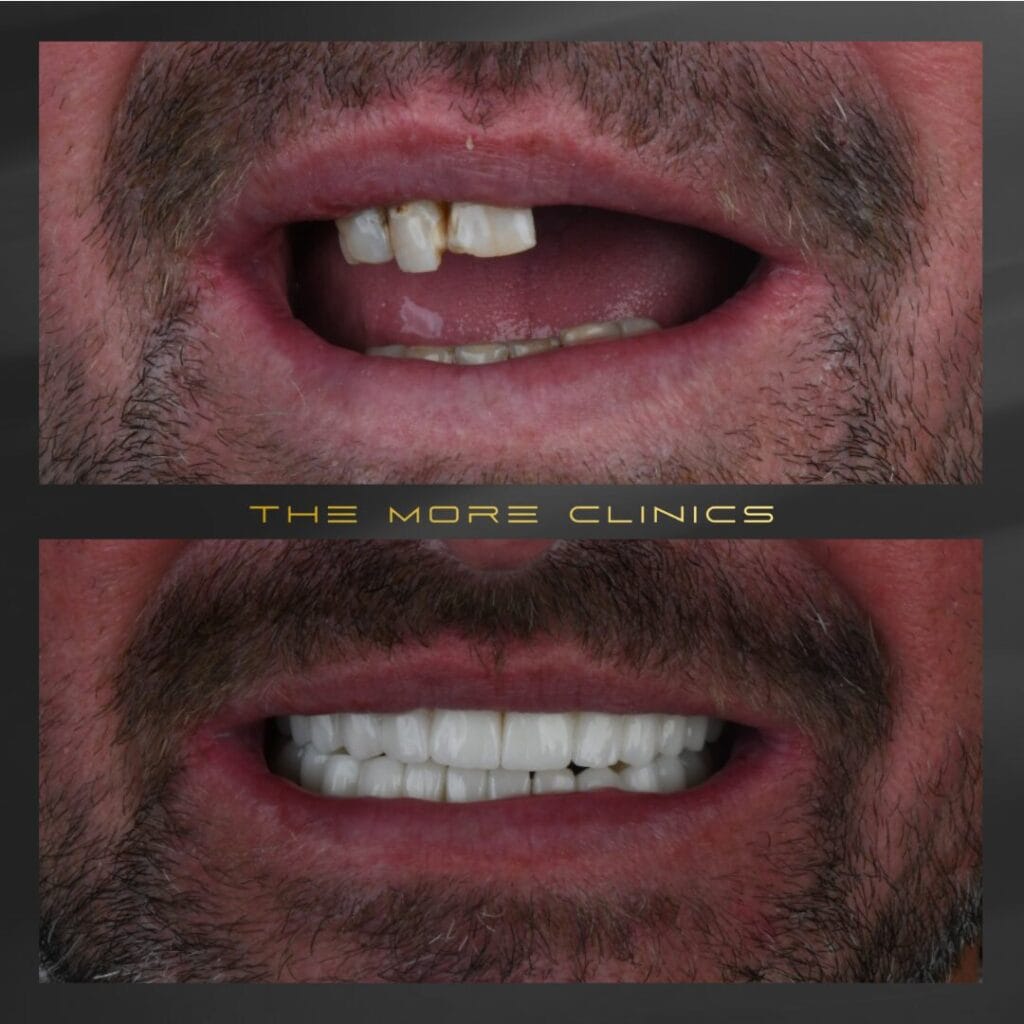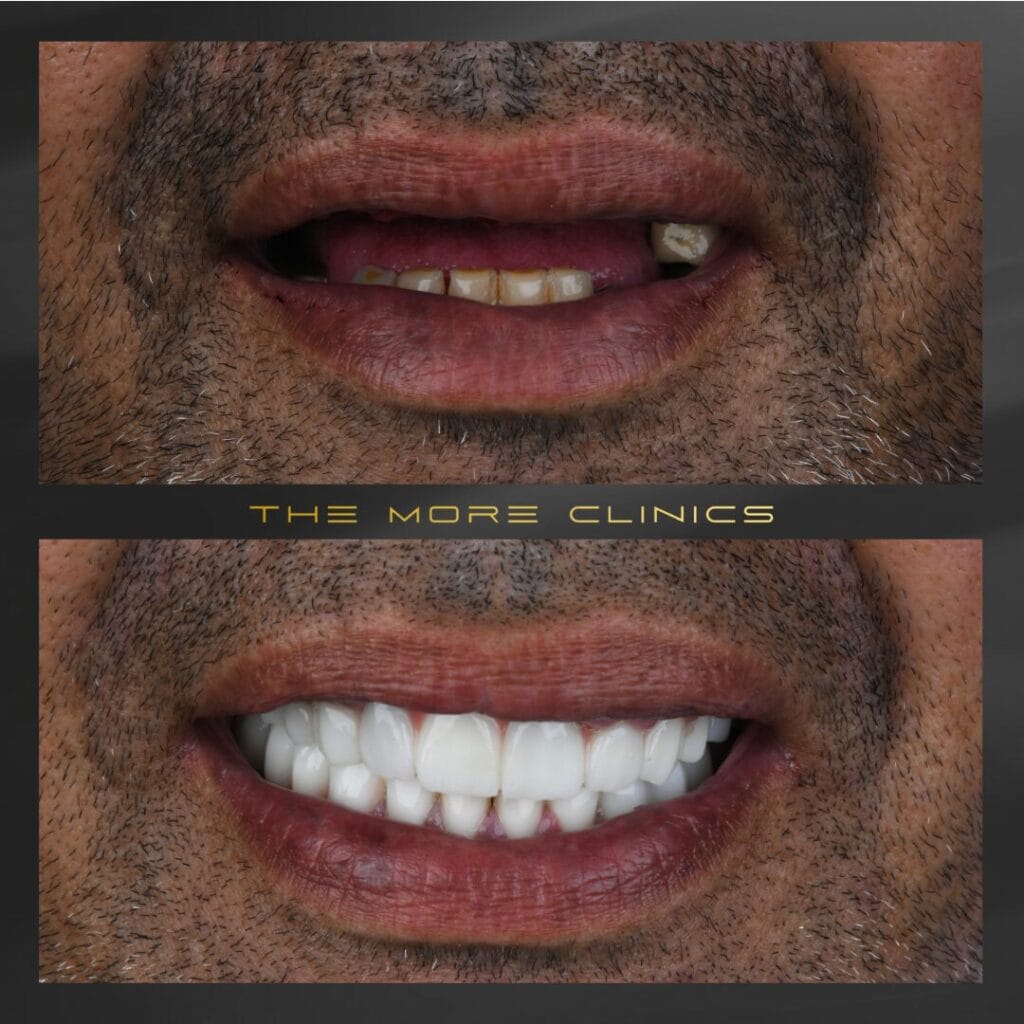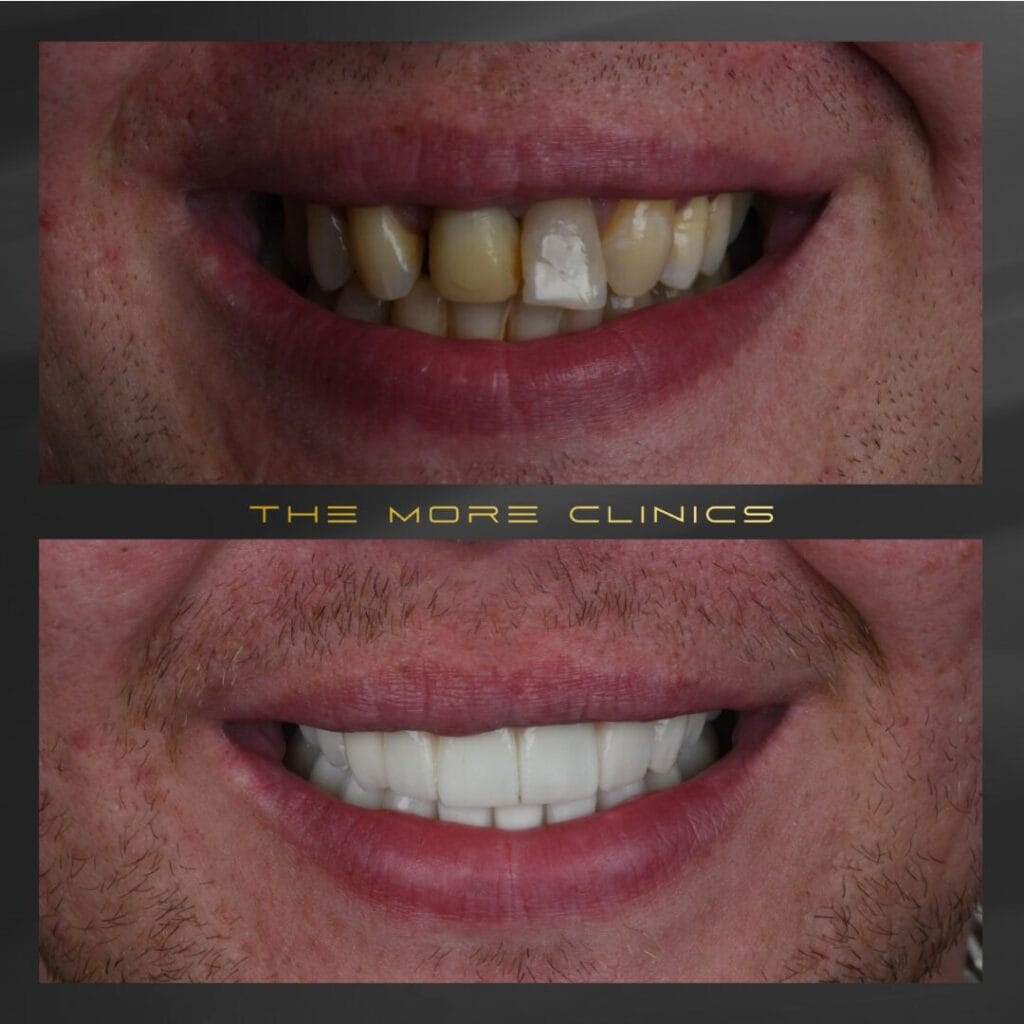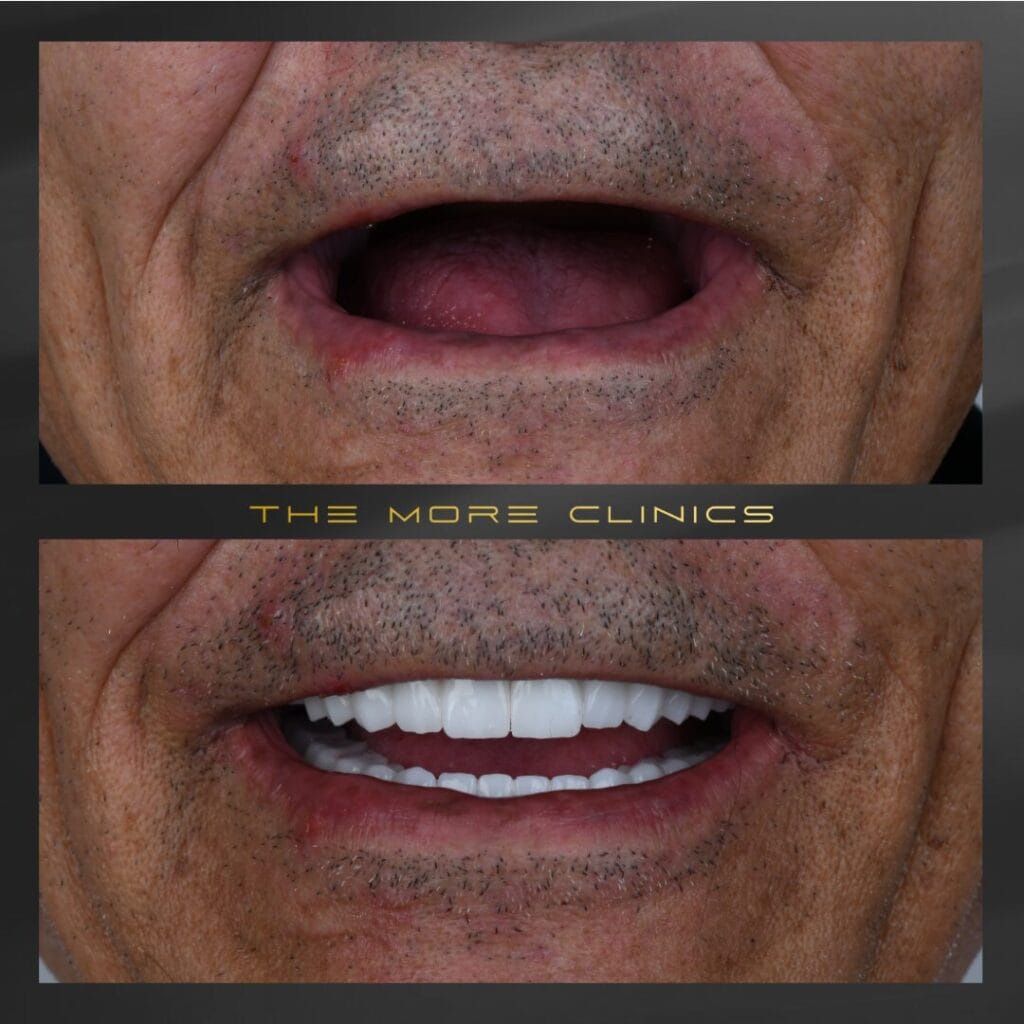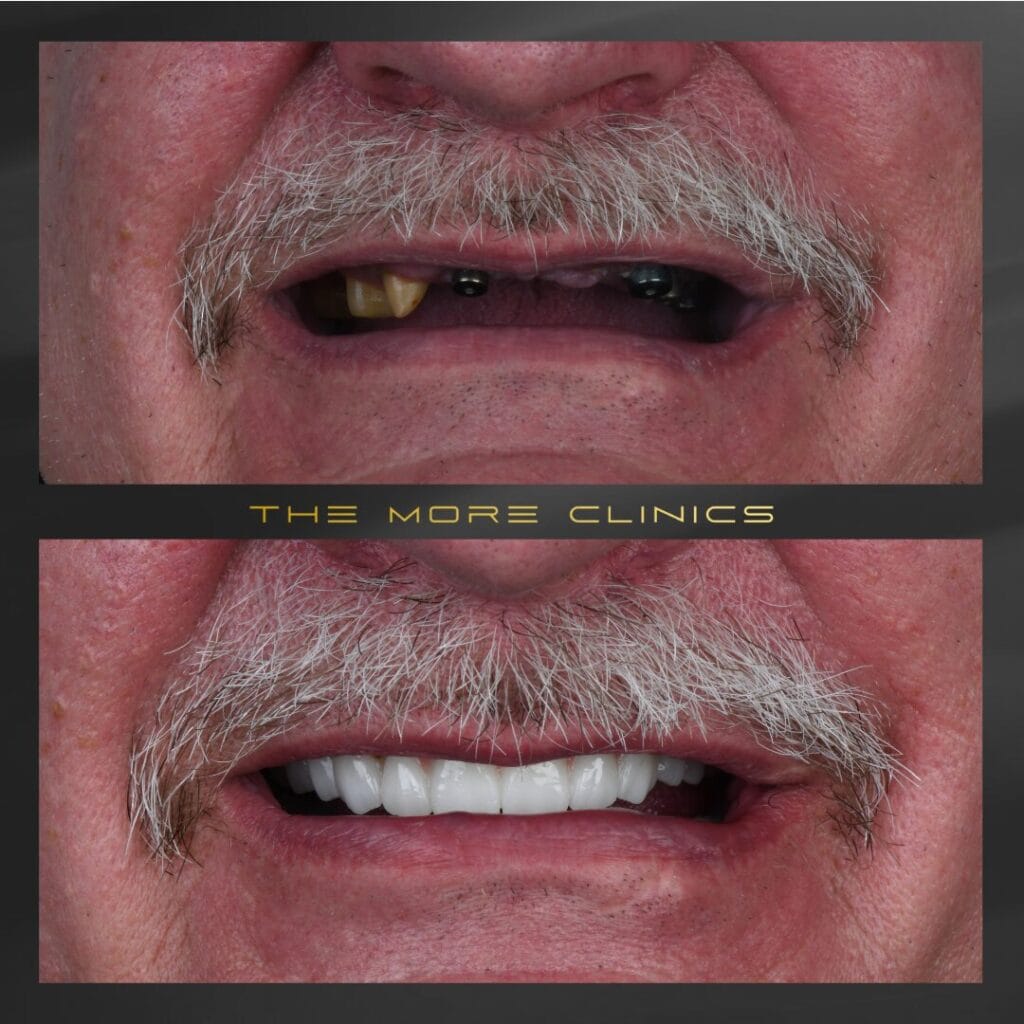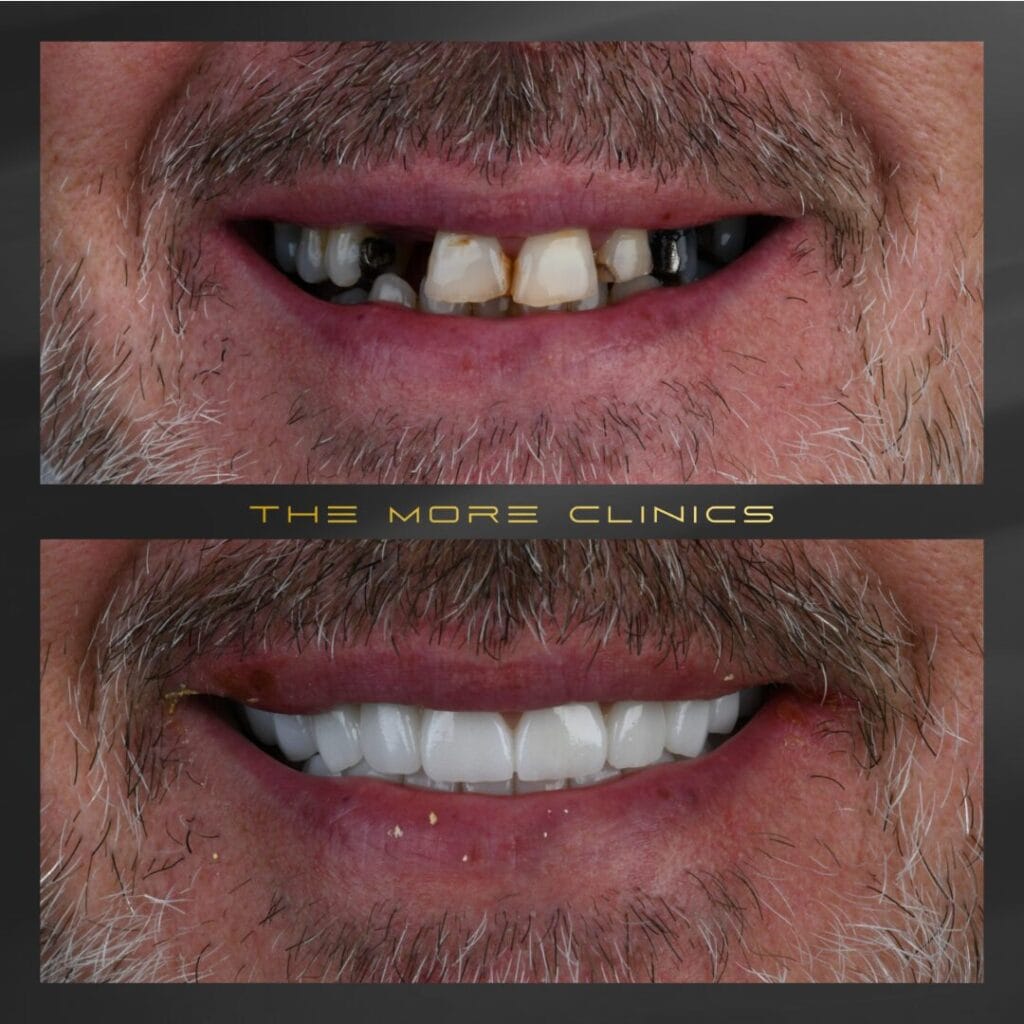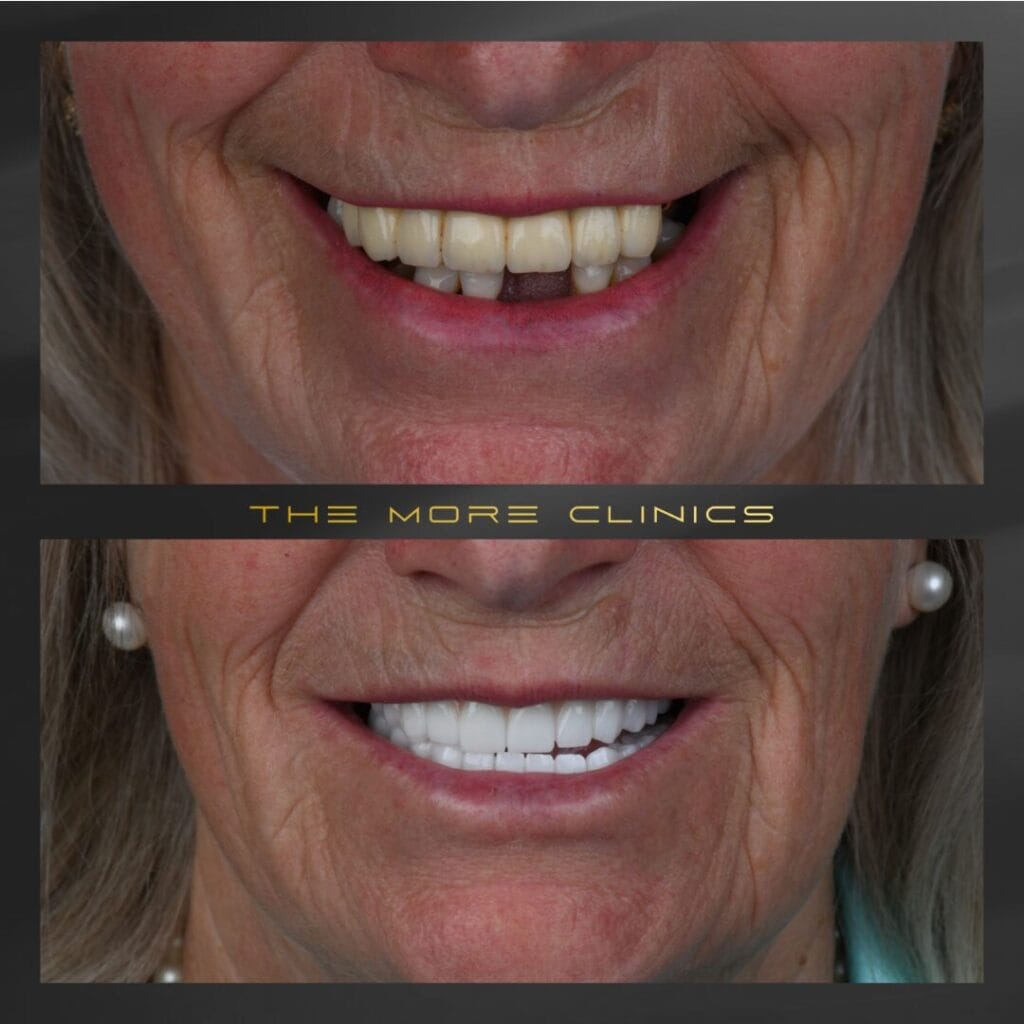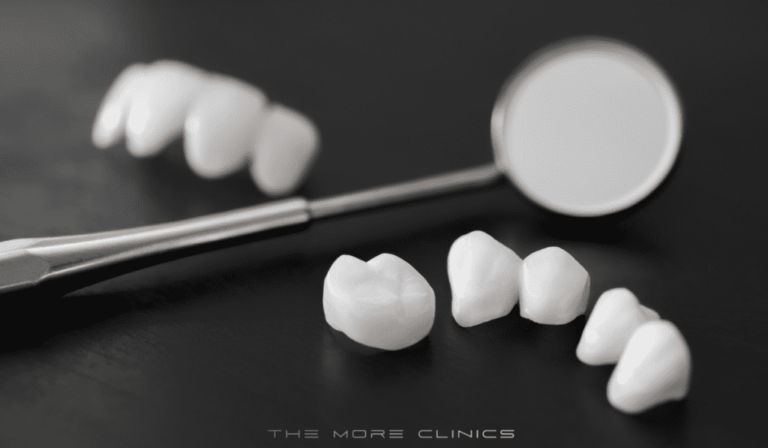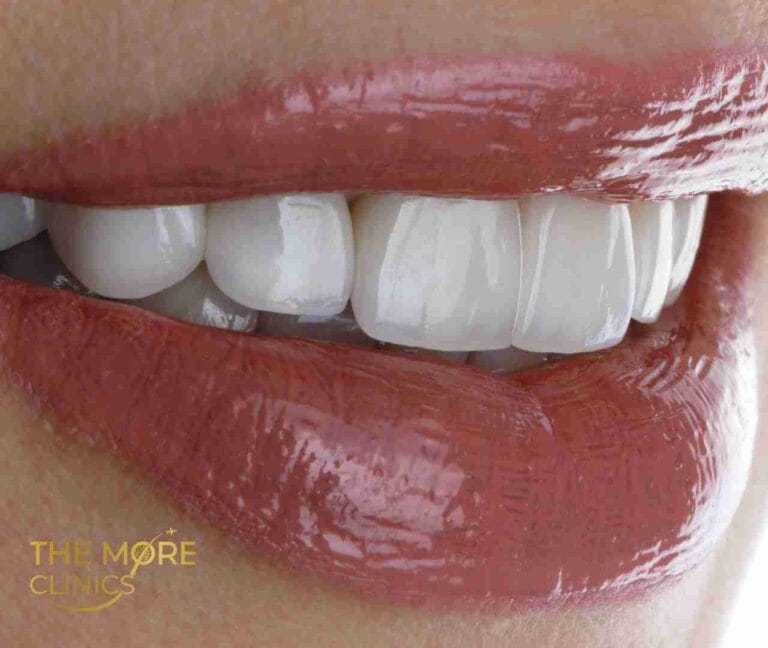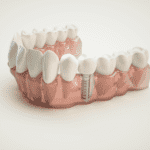Crown Lengthening Procedure: All you need to know
What is the Procedure of Crown Lengthening for Crown?
The field of dentistry has seen numerous innovations, one of which is the Crown Lengthening Procedure. This process is primarily aimed at exposing more of a tooth by reshaping or recontouring gum tissue, and sometimes bone, around the tooth. Crown Lengthening for crown is a common intervention in dentistry that helps to reveal more of the tooth’s surface for better aesthetic appearance or to support a dental restoration, such as a dental crown or bridge. Also check the Crown Lengthening Before and After Results!
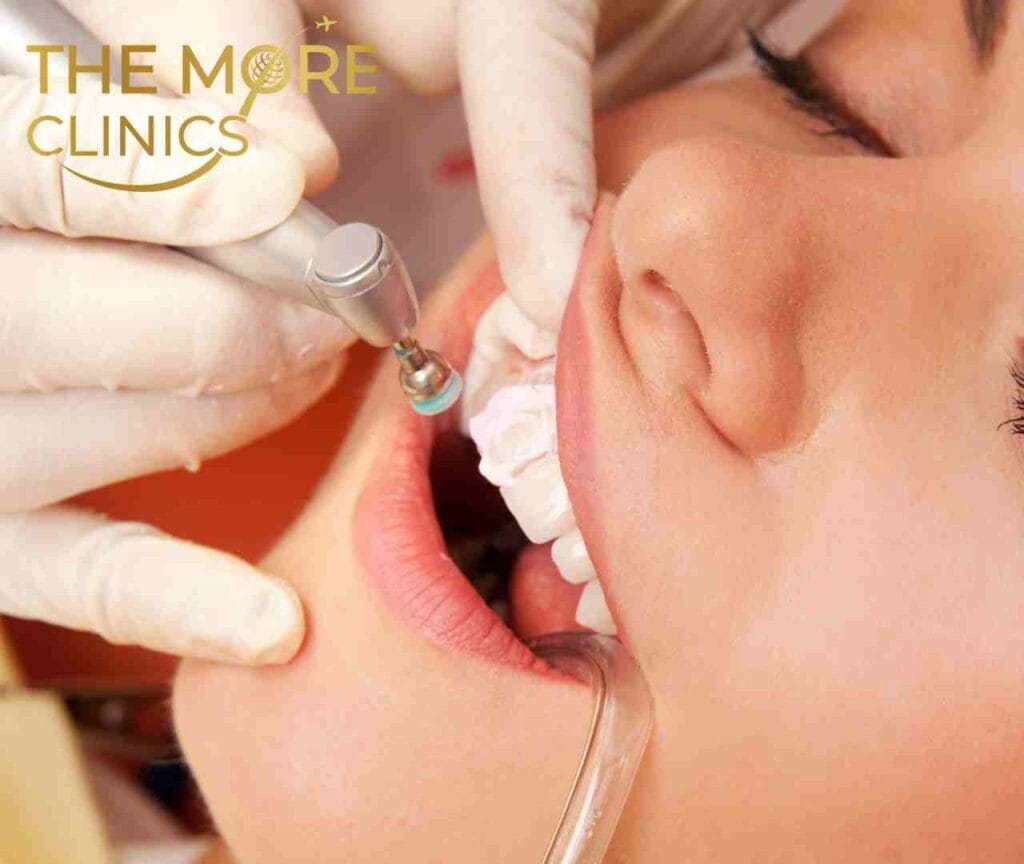
The Benefits and Purpose of Crown Lengthening
Crown Lengthening procedure offers numerous benefits and serves multiple purposes in both cosmetic and restorative dentistry:
- Aesthetic Improvement: The procedure can correct the look of “gummy” smiles where excess gum tissue covers the teeth, creating a more balanced and appealing smile.
- Restorative Function: Crown lengthening exposes more of the tooth’s surface to allow a secure placement of restorative dental treatments such as crowns and bridges, enhancing their longevity and stability.
- Oral Health: By removing excess gum tissue, the procedure can improve oral health by making teeth easier to clean and reducing the risk of gum disease and tooth decay.
- Damage Repair: The procedure is used to expose more of a tooth’s structure for treatment if a tooth is broken or decayed below the gum line.
Crown Lengthening Procedure Steps
The Crown Lengthening for crown procedure is typically performed by a periodontist and involves the following steps:
- Preparation: To ensure the patient’s comfort throughout the process, local anesthesia is administered to numb the area.
- Incision and Tissue Reshaping: A series of small incisions are made in the gum tissue to separate it from the teeth. The gum tissue is then reshaped or removed according to the required outcome.
- Bone Reshaping: In some cases, it may be necessary to remove or reshape a small amount of bone around the tooth.
- Stitching and Bandaging: Once the desired amount of tooth is exposed, the area is stitched up and bandaged to promote healing.
- Recovery: The patient is provided with aftercare instructions. A follow-up appointment is scheduled to remove stitches and monitor the healing process.
Please note, the exact steps may vary depending on the individual’s condition, the number of teeth involved, whether bone will be removed, and the specific surgical technique used.
Understanding the Possible Risks
Like any surgical procedure, Crown Lengthening for crown also carries a certain degree of risk, such as the potential for infection. To mitigate this, it’s essential that all postoperative care instructions are strictly adhered to, thus helping to prevent any complications.
Some bleeding at the site of the procedure is normal, and asensitivity to temperature fluctuations might also be noticed. This sensitivity, particularly towards hot and cold stimuli, will however diminish as healing progresses.
Your treated tooth may appear longer than its neighbors, and should the procedure have necessitated bone removal, the tooth could feel slightly loose.
Crown Lengthening procedure could pose challenges in the placement of a dental implant. This is due to the changes in the bone and gum tissue around the tooth caused by the procedure.
Crown Lenghtening for Crown Recovery Process
The recovery process varies per individual, but typically involves a period of healing, usually a few weeks to a few months, during which patients need to follow specific dental hygiene practices.
To ensure a smooth and successful recovery, patients need to follow the recommended aftercare practices which include:
- Pain Management: Take prescribed medications as directed to manage pain.
- Oral Hygiene: Follow specific cleaning instructions provided by your dental health provider. These may include using a special mouthwash or avoiding certain foods and drinks.
- Avoid Touching the Surgical Site: It is essential to avoid touching or poking the area with your fingers or tongue. This can disrupt the healing process and increase the risk of infection.
- Avoid Alcohol and Smoking: It is advisable to avoid consuming alcohol during the recovery period as it can impede the healing process and heighten the chances of complications. Additionally, it is recommended to refrain from smoking for at least 1 week.
- Swelling Management: It’s beneficial to use an ice pack intermittently (20 minutes on, 20 minutes off) on your face for the first few hours post-surgery to alleviate swelling. After a couple of days, you can switch to moist heat.
- Diet and Oral Care: For the first 24 hours, avoid hot food and refrain from rinsing your mouth to prevent prolonged bleeding. If bleeding persists, applying slight pressure to the area with a damp tea bag or gauze for about 20 to 30 minutes can be helpful.
Crown Lengthening Before and After
The Crown Lengthening before and after can be significant. Patients who previously felt self-conscious due to a “gummy” smile often find renewed confidence in their appearance. It’s important to remember that while the results may be noticeable immediately after the procedure, the final outcome will not be fully visible until the area has completely healed, which can take several weeks to a few months.
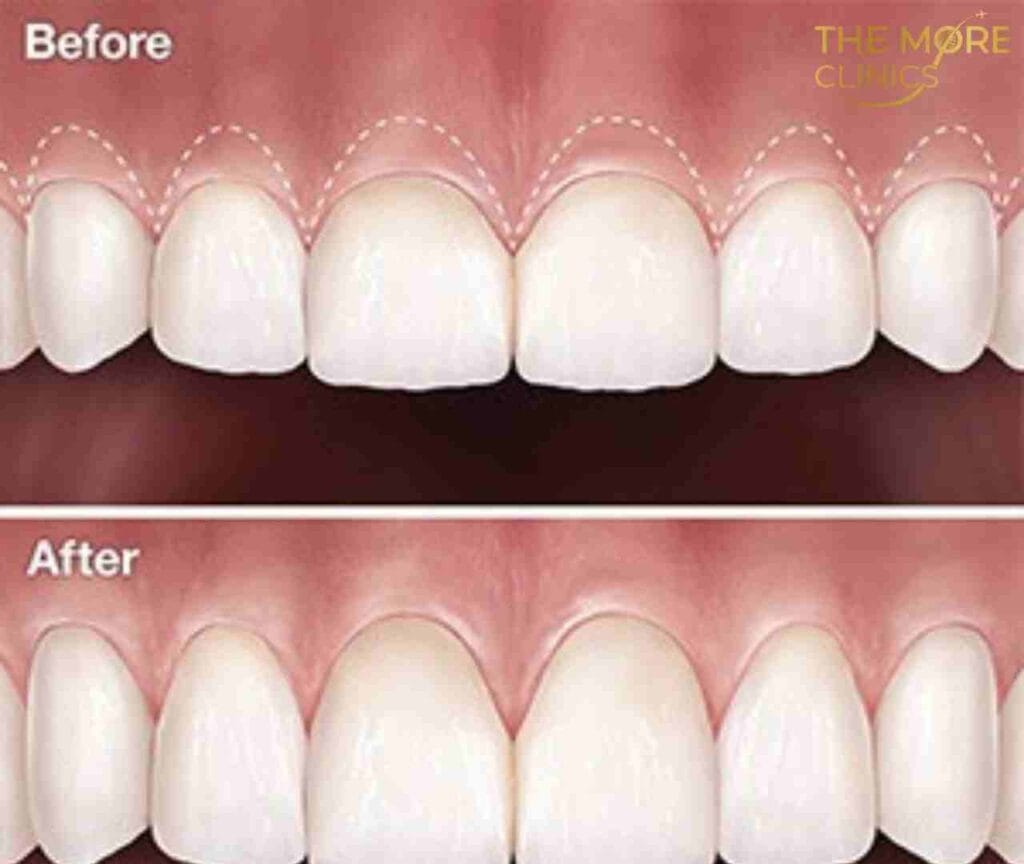
Crown Lenghtening Before and After Gallery
Crown Lengthening Cost
The crown lengthening cost can vary widely, depending largely on the region, the dentist’s experience, and the complexity of the procedure.
- General Crown Lenghtening Cost: On average, the cost for a crown lengthening procedure can range from $500 to $2,000 per tooth. Keep in mind, this price can go up if bone or tissue needs to be removed, or if multiple teeth are involved.
- Cost in USA: In the United States, crown lengthening cost is typically between $800 and $2,000 per tooth. However, it’s important to note that dental insurance may cover a portion of this cost if the procedure is deemed medically necessary.
- Cost in UK: In the United Kingdom, the NHS (National Health Service) can cover crown lengthening under Band 3 treatments, which are currently priced at £282.80. If you opt to have the procedure done privately, costs can range between £300 and £600 per tooth.
- Cost in Turkey: Turkey is well-known for its affordable dental care, with crown lengthening cost is typically ranging from $200 to $250 per tooth. However, the cost can fluctuate depending on the complexity of the procedure and the dental clinic’s location within Turkey.
Please remember that these costs are estimates, and actual prices can vary. Always consult with your dentist or oral surgeon for the most accurate pricing information.
Last Words from the More Clinics
At More Clinics, we prioritize your oral health and smile. Our team of experienced dental professionals will guide you through the Crown Lengthening procedure, ensuring you’re fully informed and comfortable. We’re here to make your journey towards a healthier smile as smooth as possible.
Remember, a beautiful smile is not just about aesthetics, but also about maintaining good oral health. Choose the Crown Lengthening procedure at More Clinics, your partner in preserving your captivating smile!
GET A FREE CONSULTATION!
Let’s Start Planning Your Treatment %100 Guarantee Results.

